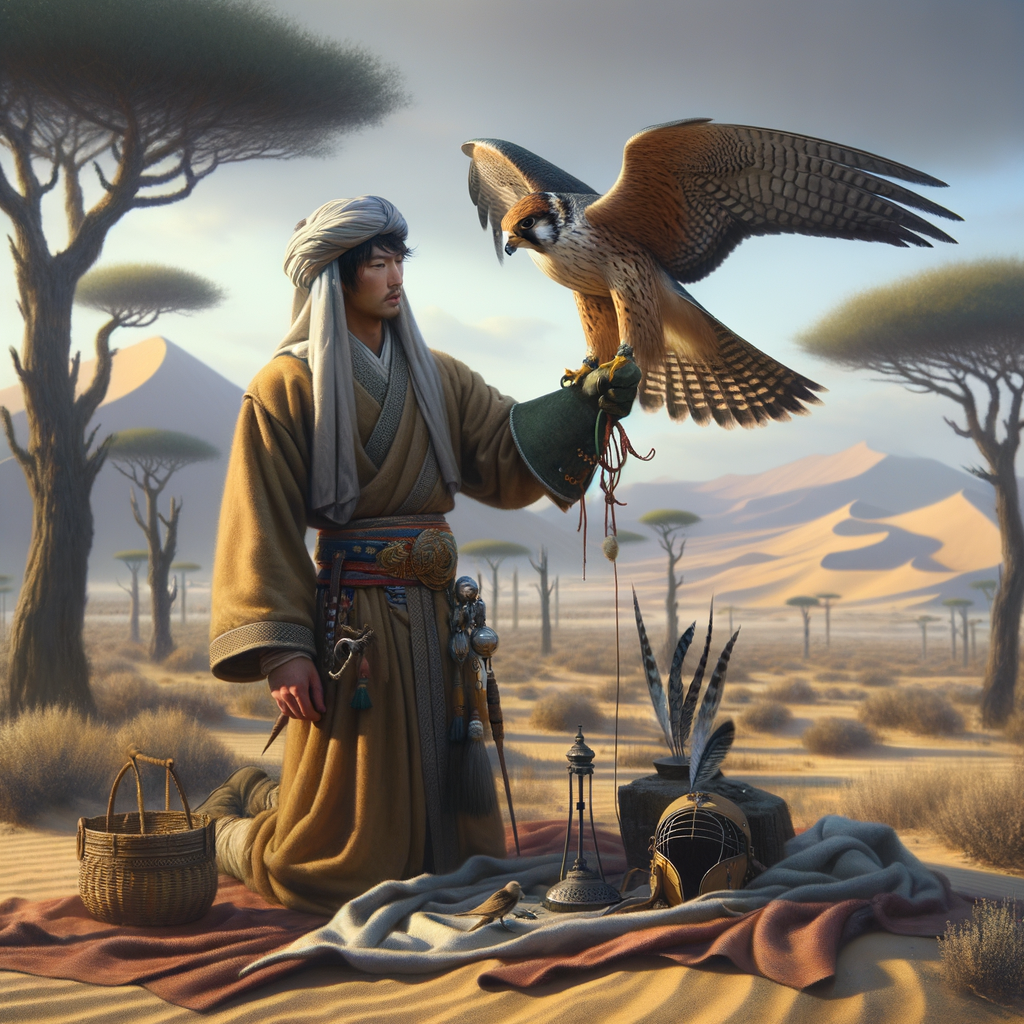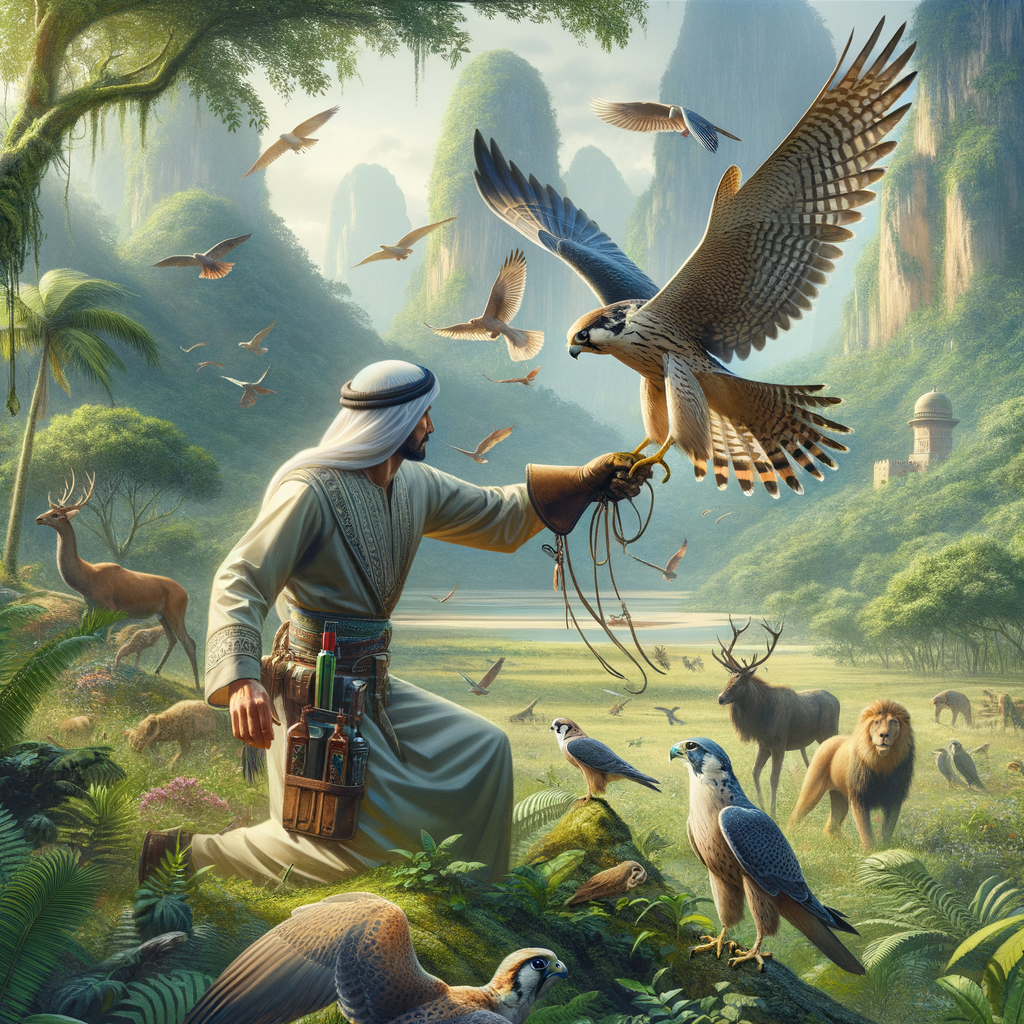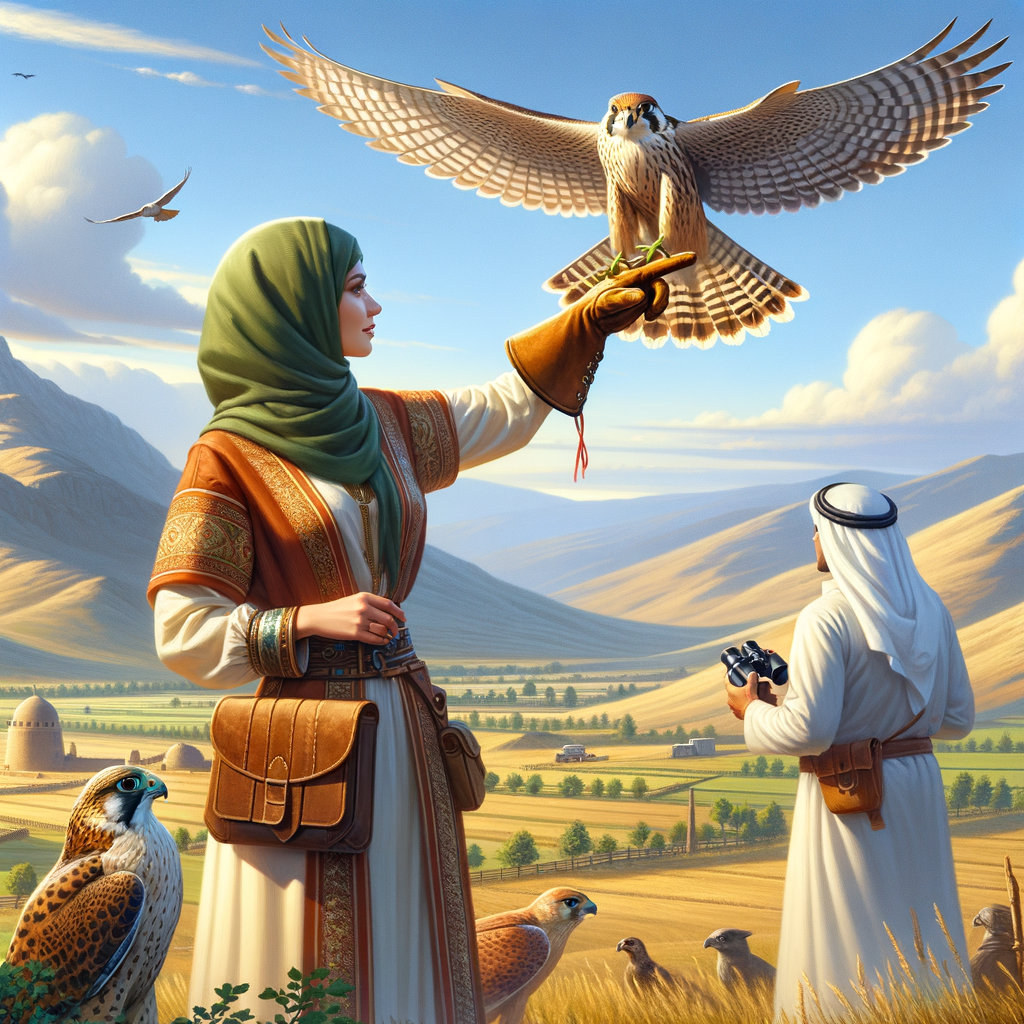Fascinating Facts About Falconry in Ancient Cultures
- Ancient Art: Falconry has been practiced for thousands of years, dating back to 2000 BCE in Mesopotamia.
- Cultural Heritage: This skill spread across various cultures, including Egypt, Persia, Greece, and the Roman Empire.
- Noble Pursuit: In many ancient societies, falconry was a sport enjoyed by royalty and the elite.
- Symbol of Status: Falcons were considered a sign of power and wealth among noble families.
- Practical Uses: Falcons were used to hunt small game, providing food and showcasing hunting skills.
- Training Techniques: Ancient falconers used methods that have been passed down and are still in use today.
- Historical Artifacts: Art and literature from ancient times often depict falconry, indicating its importance.
- Global Spread: The practice of falconry eventually spread to Europe and Asia, influencing hunting practices worldwide.
- Preserved Traditions: Modern falconry still reflects many techniques and customs from its ancient roots.
Explore more about this incredible ancient art and how it shaped history with Learn Falconry!
Discovering the Ancient Art of Falconry: A Journey Through Time and Cultures
Imagine wandering through the misty green hills of Ireland, stumbling upon an ancient Celtic manuscript. As the pages reveal wondrous tales of warriors and druids, you come across an account of harnessing the skies with the unparalleled bond between humans and falcons. Just as ancient Ireland had its legendary traditions, the art of falconry has weaved its spell across many ancient cultures, each adding its unique twist to this captivating practice.
Here at Learn Falconry, we invite you to fly alongside us as we explore the deep historical roots and the mesmerizing importance of falconry. By delving into how ancient civilizations from all corners of the globe cherished and perfected this majestic art, we hope to spark within you an appreciation for its timeless relevance and beauty.
So, grab a comfy seat and let your imagination take flight. The journey you’ll embark upon will reveal how falconry not only captivated hearts and minds long ago but continues to inspire and unite enthusiasts from all walks of life today. Keep reading to uncover the magic and mystery of falconry ‘ an ancient art that has stood the test of time!
Exploring the Roots of Falconry in Ancient Cultures
Falconry, the art of training birds of prey to hunt, has a long and fascinating history that dates back thousands of years. The journey of ancient falconry is a tapestry woven with stories from various historical falconry cultures and their unique ancient falconry practices. These ancient falconry traditions provide a glimpse into how humans have harnessed the extraordinary hunting skills of birds of prey across different civilizations.
Ancient Falconry: A Glimpse into the Past
The origin of ancient falconry can be traced back to Mesopotamia, where evidence of falconry practices was discovered. These early falconers were highly respected for their skills and knowledge in training falcons to hunt. Archaeological findings show that ancient falconers used methods and equipment remarkably similar to those used today. If you are interested in learning more about the origins of falconry, you can explore the ancient origins of falconry.
Historical Falconry Cultures Around the World
Each culture adopted and adapted falconry techniques to fit their environment and lifestyle. In the Middle East, falconry has a rich history and is closely associated with royalty and nobility. Middle Eastern falconers refined their practices, making it an art form that was both a sport and a symbol of status. Discover more about falconry in the Middle East.
In Europe, falconry flourished during the Medieval period. Falconers in this era used birds of prey for hunting game, and it became an essential part of their way of life. Details on the evolution of European falconry can be found in the section on falconry in Medieval Europe.
Unique Practices and Traditions
Different regions developed their own ancient falconry practices. For instance, Mongolian falconers are known for their use of Golden Eagles, which are capable of hunting larger prey like foxes. This practice has been passed down through generations and remains part of the Mongolian heritage. More about Mongolian traditions can be found in our article on falconry in Mongolian culture.
In Japan, the ancient art of Takagari, or falconry, was practiced by Samurai warriors who valued it for its elegance and precision. The Japanese developed unique training techniques that emphasized harmony and respect between the falconer and the bird. Explore more about falconry in Japanese culture.
Equipment and Techniques
Ancient falconers developed various tools and techniques essential for falconry. The types of equipment used, such as hoods, gloves, and perches, have evolved but remain quite similar to those used by ancient falconers. A detailed guide on essential falconry gear can be found in our section on falconry equipment.
Training techniques, too, were passed down and refined over the centuries. Methods used in training a falcon range from basic to advanced, ensuring the bird responds to the falconer’s commands and performs effectively during hunts.
Falconry and Culture
Falconry is not just a sport; it is deeply embedded in the cultures where it is practiced. In some regions, festivals and competitions celebrate this ancient practice, highlighting its enduring legacy and importance. The role of falconry in various cultures is an intriguing subject, further explored in our article on falconry in ancient cultures.
By understanding the rich history and evolution of ancient falconry traditions, we can appreciate the depth and significance of this remarkable practice that continues to captivate people around the world today.
Ancient Falconry Practices Across Cultures
Falconry, the art of training birds of prey for hunting, is an ancient practice that has been part of many cultures around the world. Let’s dive into some fascinating aspects of historical falconry practices and how they have evolved over time.
Historical Timeline of Falconry
Age of Falconry:
Falconry began around 2000 BCE in Central Asia and the Iranian Plateau. It has been around for approximately 4,000 years, making it one of the oldest sports in human history.
Falconry in Different Regions
Ancient Mesopotamia:
- Key Practices: The Sumerians, Babylonians, and Assyrians practiced falconry using golden eagles and other large birds of prey.
- Timeline: Around 2000 BCE.
- Cultural Impact: Falcons were used for hunting and held symbolic meaning in various rituals.
Medieval Europe:
- Key Practices: European nobility favored falconry during the Middle Ages as a symbol of status.
- Bird Species: Peregrine falcons, gyrfalcons, and goshawks were commonly used.
- Cultural Impact: Falcons were often seen as emblems of power and nobility.
Mongolian Falconry:
- Key Practices: Dating back to the 13th century, Mongolian falconers used falcons for hunting and warfare.
- Modern Impact: The tradition continues, with many families preserving falconry as part of their cultural heritage.
Arabian Falconry:
- Key Practices: Falconry in the Arabian Peninsula was associated with royal courts.
- Bird Species: Peregrine falcons and lanner falcons were popular choices.
- Cultural Impact: Falcons symbolized nobility, strength, and freedom.
Falconry’s Cultural Significance
Falconry has deep cultural roots in many societies. Here are some general data points that highlight its importance:
- Global Distribution: Falconry is practiced widely in the Middle East, Europe, and Asia, with stronghold regions like Britain, the U.S., Central Asia, and the Persian Gulf states.
- Bird Species Used: Common falconry birds include peregrine falcons, gyrfalcons, goshawks, and lanner falcons.
- Training Methods: Traditional methods include the use of hoods, jesses, and gloves. Conditioning is essential for finding the correct hunting weight and increasing the bird’s fitness.
- Cultural Symbolism: In many cultures, falconry is associated with high status, patience, and a deep connection with nature.
Conservation and Modern Falconry
- Conservation Efforts: Modern falconry practices focus on conservation and the responsible protection of bird populations. This includes habitat preservation and reintroduction programs.
- Falconry Festivals and Competitions: These events promote cultural heritage and conservation awareness, with enthusiasts gathering to showcase their skills and birds.
Falconry Today
Even today, falconry remains a beloved and respected tradition in many parts of the world. It has adapted to modern times but still retains its ancient charm and significance:
- Regulation and Licensing: Different regions have specific regulations and licensing requirements for practicing falconry. For example, in Utah, the falconry take application period for peregrine falcons is February 1 – March 31, with a total of 17 permits available.
- Events and Demonstrations: Shows and fairs like the British Falconry Fair and demonstrations at Hohenwerfen Castle in Austria highlight the sport’s ongoing popularity and cultural value.
Falconry Training Techniques
- Conditioning: Finding the correct hunting weight and increasing the bird’s fitness through gradual training.
- Using Equipment: Hoods, jesses, and gloves are essential tools in falconry.
- Building Trust: Falconers must develop a strong bond with their birds, ensuring trust and cooperation.
Falconry as an Intangible Cultural Heritage
Falconry has been recognized by UNESCO as an Intangible Cultural Heritage of Humanity in 17 countries across three continents. This acknowledgment emphasizes its cultural importance and historical significance.
International Recognition and Preservation
Modern falconry not only respects traditional practices but also embraces new methods and technologies to ensure the sustainability of this ancient art. It continues to be a fascinating and engaging activity for people of all ages.
Celebrating the Legacy of Falconry in Ancient Cultures
Falconry, with its roots tracing back thousands of years, is not just a sport but a timeless tradition that has touched various cultures around the world. From the ancient Sumerians of Mesopotamia to the noble courts of Medieval Europe, and from the Bedouins of the Arabian Desert to the joyous Mongolian falcon hunting, falconry has always been more than mere bird training. It’s an art form, a lifestyle, and a symbol of nobility, patience, and the unspoken bond between humans and nature.
Key highlights include:
- Cultural Significance: In many ancient societies, falconry wasn’t just about hunting; it symbolized status, prowess, and a deep connection with nature.
- Global Spread: While it began in Central Asia and the Iranian Plateau, falconry quickly spread across the Silk Road, reaching Europe and the Middle East, adapting to local traditions and climates.
- Conservation Efforts: Historically, falconry has always been intertwined with conservation, from early protective laws to modern habitat preservation initiatives.
- Modern Practices: Today, falconry continues to be a cherished tradition, celebrated in festivals, exhibitions, and competitions worldwide. It maintains its grandeur and significance while evolving to align with contemporary conservation and ethical standards.
In essence, falconry is a testament to our shared heritage and the incredible ways humans can harmonize with wildlife. Whether you’re a history lover or a nature enthusiast, appreciating the age-old traditions of falconry brings us closer to the majestic birds and the storied past they represent. Let’s honor and protect these traditions for future generations to enjoy and cherish.



